PROPERTY FROM AN IMPORTANT NEW YORK COLLECTION Yinka Shonibare Boy on Flying Machine 2008 mannequin, Dutch wax printed cotton, steel, rubber, aluminum mannequin 61 x 23 1/2 x 27 1/2 in. (154.9 x 59.9 x 70.1 cm.) propeller 78 5/8 x 23 1/2 x 35 1/4 in. (199.9 x 59.9 x 89.9 cm.) overall 71 x 58 x 68 in. (180.3 x 147.3 x 172.7 cm.)
Provenance James Cohan Gallery, New York Exhibited Miami, Miami Art Museum, Yinka Shonibare MBE: A Flying Machine For Every Man, Woman and Child and Other Astonishing Works, October 31, 2008- January 18, 2009, then traveled toSanta Barbara Museum of Art (March 14- June 21, 2009) Literature Yinka Shonibare MBE: A Flying Machine For Every Man, Woman and Child, exh. cat., Santa Barbara Museum of Art, Santa Barbara, 2009, n.p. (illustrated) Catalogue Essay “None of us have isolated identities anymore, and that’s a factor of globalization ultimately. I suppose I’m a direct product of that…I’m trying to grasp living with more than one culture in my head.” YINKA SHONIBARE 2013 Yinka Shonibare’s Boy on Flying Machine, 2008, with its twirling propeller of rich crimson and deep emerald and its energetic pilot adorned in vibrant and intricate fabrics, twirls and soars to great heights in both its visual splendor and simply miraculous existence. The engaged youthful pilot stands upon the pedals ready to ascend to impossible heights as his flying contraption is set in motion by merely the muscles in his legs. Shonibare’s Boy on Flying Machine, 2008, is at once sophisticated in its ingenuity and artistry, but also childlike and playful in its imaginative and dreamlike ambition. The present lot is an object of wonder and fantasy and undoubtedly one of the artist’s greatest realizations. Yinka Shonibare’s remarkable popularity in today’s art world is a testament to both the profound cultural implications of his work and his daringness to resist categorization as a sculptor. Shonibare’s inherently theatrical creations, which are pillars of the permanent collections of countless institutions, including The Museum of Modern Art, New York, Tate Modern, London, Art Institute of Chicago, and Walker Art Center, Minneapolis, incorporate a number of dissonant elements into a final product that is at once comical and clever, absurd yet scathingly satirical. As seen in the present lot, the craft of the sculpture, the labor of each pattern and each construction, is masterfully executed. The fabrics which adorn the characters of his tableaus are Dutch-manufactured textiles originally exported from England to Indonesia. When they failed to sell on the Indonesian market, they were once again exported, but this time to Africa. Shonibare piles these textiles atop mannequins of Western derivation, and then stitches the fabric into the shapes of the eighteenth century European aristocracy. While the batik pattern is commonly known as “African,” it is in fact a twice removed European export, and far from traditional. By implementing these fabrics, Shonibare has literally woven together the strands of cultures and customs that comprise the continent from which these patterns are considered “original.” Consequently, the present lot, Boy on Flying Machine, 2008, is a meeting place of multiple ethnicities and racial histories, as deep in academic intrigue as it is wondrous to admire. The origins of Shonibare’s work are themselves a study in origin. Born in England, raised in Lagos, Nigeria, and now living in London, Shonibare has expressed his fascination with the idea of culture as a construct – much like a work of art is a fabrication in and of itself. His penchant for incorporating Victorian-era machinery into his work situates it in a kind of utopian wonderland perfect for exploring clashing cultures and historical periods. The present lot was part of a seminal traveling exhibition, A Flying Machine for Every Man, Woman and Child, shown along with Shonibare’s other fying machine sculptures in an installation depicting an idealized nineteenth century nuclear family of four members: mother, father, boy and girl. Each family member, intricately crafted with masterful skill, mounts his or her machine with an energy fitting each role; the father stands erect and proud atop his vessel, his feet conservatively resting on the pedals. The mother, in utter glee, stretc
PROPERTY FROM AN IMPORTANT NEW YORK COLLECTION Yinka Shonibare Boy on Flying Machine 2008 mannequin, Dutch wax printed cotton, steel, rubber, aluminum mannequin 61 x 23 1/2 x 27 1/2 in. (154.9 x 59.9 x 70.1 cm.) propeller 78 5/8 x 23 1/2 x 35 1/4 in. (199.9 x 59.9 x 89.9 cm.) overall 71 x 58 x 68 in. (180.3 x 147.3 x 172.7 cm.)
Provenance James Cohan Gallery, New York Exhibited Miami, Miami Art Museum, Yinka Shonibare MBE: A Flying Machine For Every Man, Woman and Child and Other Astonishing Works, October 31, 2008- January 18, 2009, then traveled toSanta Barbara Museum of Art (March 14- June 21, 2009) Literature Yinka Shonibare MBE: A Flying Machine For Every Man, Woman and Child, exh. cat., Santa Barbara Museum of Art, Santa Barbara, 2009, n.p. (illustrated) Catalogue Essay “None of us have isolated identities anymore, and that’s a factor of globalization ultimately. I suppose I’m a direct product of that…I’m trying to grasp living with more than one culture in my head.” YINKA SHONIBARE 2013 Yinka Shonibare’s Boy on Flying Machine, 2008, with its twirling propeller of rich crimson and deep emerald and its energetic pilot adorned in vibrant and intricate fabrics, twirls and soars to great heights in both its visual splendor and simply miraculous existence. The engaged youthful pilot stands upon the pedals ready to ascend to impossible heights as his flying contraption is set in motion by merely the muscles in his legs. Shonibare’s Boy on Flying Machine, 2008, is at once sophisticated in its ingenuity and artistry, but also childlike and playful in its imaginative and dreamlike ambition. The present lot is an object of wonder and fantasy and undoubtedly one of the artist’s greatest realizations. Yinka Shonibare’s remarkable popularity in today’s art world is a testament to both the profound cultural implications of his work and his daringness to resist categorization as a sculptor. Shonibare’s inherently theatrical creations, which are pillars of the permanent collections of countless institutions, including The Museum of Modern Art, New York, Tate Modern, London, Art Institute of Chicago, and Walker Art Center, Minneapolis, incorporate a number of dissonant elements into a final product that is at once comical and clever, absurd yet scathingly satirical. As seen in the present lot, the craft of the sculpture, the labor of each pattern and each construction, is masterfully executed. The fabrics which adorn the characters of his tableaus are Dutch-manufactured textiles originally exported from England to Indonesia. When they failed to sell on the Indonesian market, they were once again exported, but this time to Africa. Shonibare piles these textiles atop mannequins of Western derivation, and then stitches the fabric into the shapes of the eighteenth century European aristocracy. While the batik pattern is commonly known as “African,” it is in fact a twice removed European export, and far from traditional. By implementing these fabrics, Shonibare has literally woven together the strands of cultures and customs that comprise the continent from which these patterns are considered “original.” Consequently, the present lot, Boy on Flying Machine, 2008, is a meeting place of multiple ethnicities and racial histories, as deep in academic intrigue as it is wondrous to admire. The origins of Shonibare’s work are themselves a study in origin. Born in England, raised in Lagos, Nigeria, and now living in London, Shonibare has expressed his fascination with the idea of culture as a construct – much like a work of art is a fabrication in and of itself. His penchant for incorporating Victorian-era machinery into his work situates it in a kind of utopian wonderland perfect for exploring clashing cultures and historical periods. The present lot was part of a seminal traveling exhibition, A Flying Machine for Every Man, Woman and Child, shown along with Shonibare’s other fying machine sculptures in an installation depicting an idealized nineteenth century nuclear family of four members: mother, father, boy and girl. Each family member, intricately crafted with masterful skill, mounts his or her machine with an energy fitting each role; the father stands erect and proud atop his vessel, his feet conservatively resting on the pedals. The mother, in utter glee, stretc
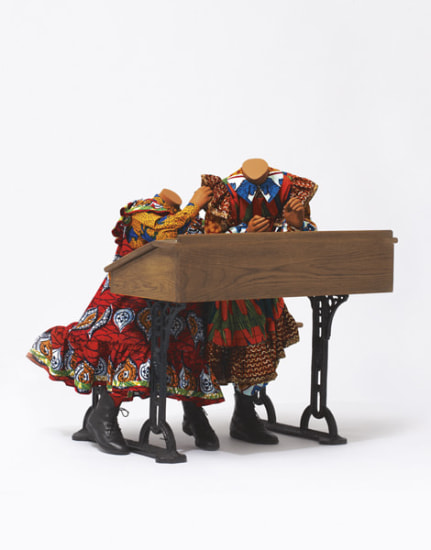
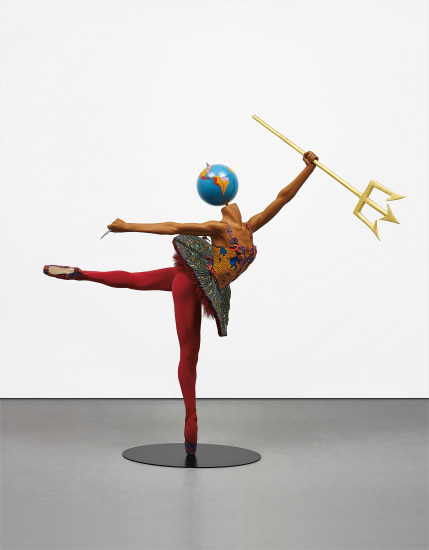

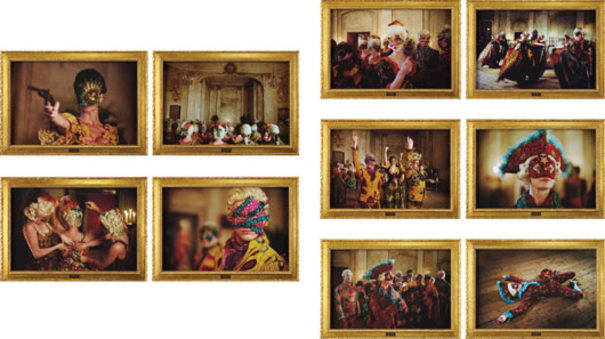
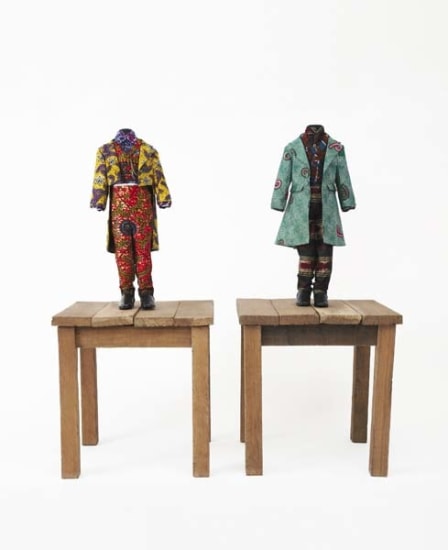

.jpg)

.jpg)


.jpg)
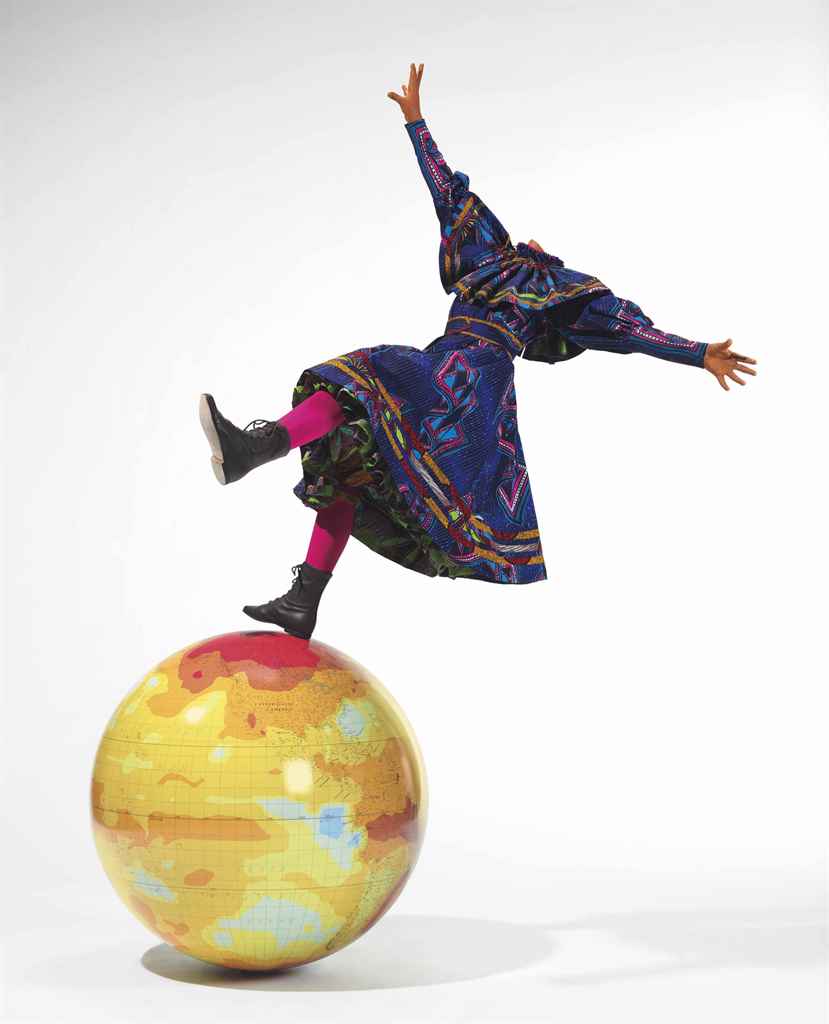
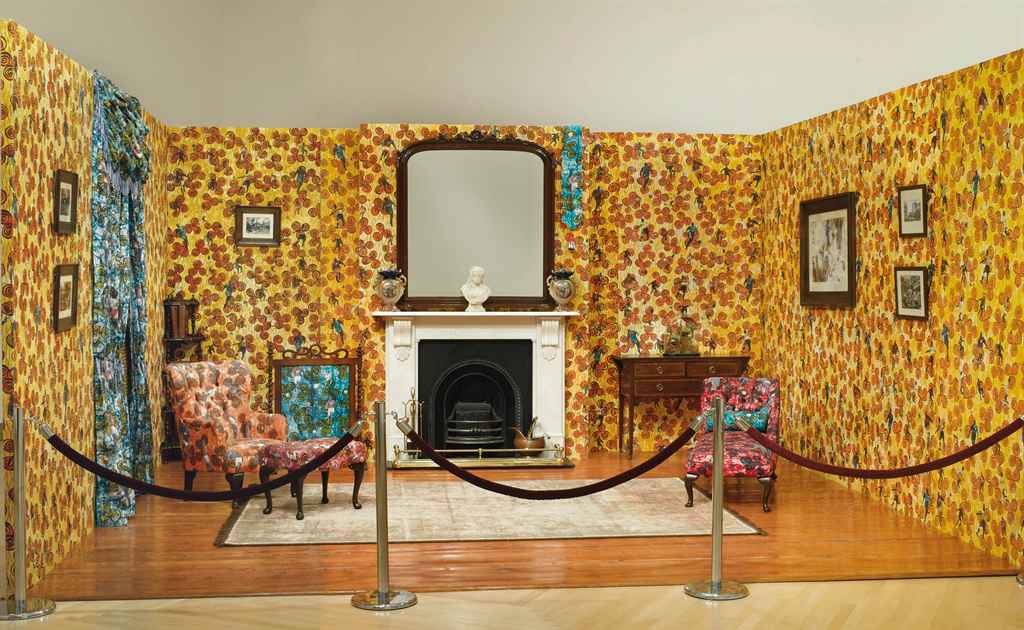
Try LotSearch and its premium features for 7 days - without any costs!
Be notified automatically about new items in upcoming auctions.
Create an alert